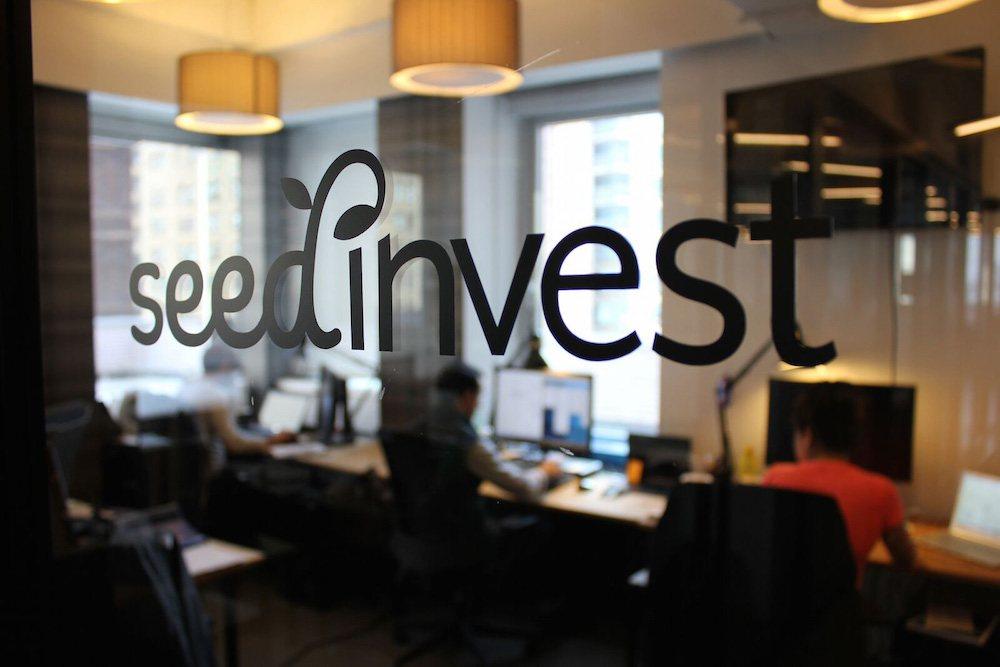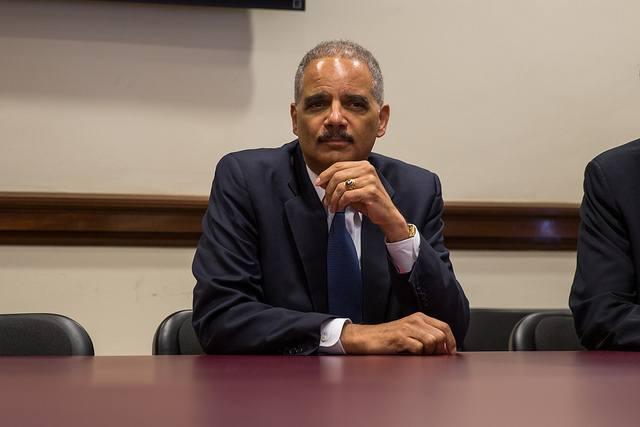The other “B” word — not Brexit or Boris, but British bees


by Sangeeta Haindl — Organic food UK home delivery service Abel & Cole has welcomed 60,000 honeybees to its offices in Wimbledon as part of its commitment to educating people about the importance of bees and other pollinators. This ethical food business, which sells organic food nationwide, is working with sustainable beehive management company Plan Bee Ltd and hopes to welcome up to 180,000 honeybees this summer. Organic farming plays a crucial role in protecting biodiversity and while Abel & Cole may not be farmers, they believe that they can still play a positive part in sustainable food systems.
Since 2007 the amount of bees in the UK has decreased by a third, due to farming methods, a lack of bee-friendly plants and global warming. Yet these insects are crucial for biodiversity and are responsible for pollinating a third of the food that we eat. Therefore, protecting and preserving dwindling honeybee populations is an important environmental commitment from this company, as its support with other food producers is essential part of supporting British bees, British agriculture and British food production. The only air miles that will go into Abel & Cole’s honey will be those flown by their bees and since 2010 Abel & Cole has run a various awareness campaigns with its customers about the decline in pollinator populations. The company is also looking to create pollinator palaces at each of its eight depots to ensure all staff have the chance to do their bit to help bees and bumblebees.
Plan Bee has already returned more than ten million bees to the natural environment. As an urban farmer, it has taken what was a dying rural craft, modernised and urbanised it, giving it broad corporate appeal. Like Abel & Cole, Plan Bee shares that ethos, working with businesses that not only care about good food, but also truly care about the environment.
Bees are high on the news agenda, as biologists at Queen Mary University of London have super-glued ‘licence plates’ to 500 bees, which have been released into the environment to uncover the secret lives of the insects. This is called the London Pollinator Project, which is trying to locate the bees’ preferred patches in the capital and discover which are their favourite flowers. Also, to encourage a citywide bee hunt, the university is awarding prizes of £100 vouchers for the best pictures of these special insects. The bees individual 'license plates' will enable anyone interested to develop their own science project and ask scientific questions about the behaviour of bees. The knowledge gathered will help researchers improve planting schemes to help bee populations thrive.
Sadly, Britain’s bees are facing multiple threats, from loss of flower meadows and quiet places to nest, to the use of pesticides in most modern farming. The good news is that these above initiatives show that we can all play a part in helping them. Our towns and cities could become huge nature reserves for pollinators.
Photo Credit: Plan Bee
Crowdfunding Links Small Investors To Social Enterprise Startups


New companies usually restrict their initial stock and bond offerings to "accredited investors," otherwise known as rich people. Now there's a way for ordinary folks to get in on the ground floor. The new investment channel is risky. But a study shows it might turn into an important funder for the smallest mission-driven businesses.
In mid-May, the Securities and Exchange Commission (SEC) rules took effect allowing anyone with Internet access to invest small sums in startup companies, with a maximum permitted offering of $1 million per year. "Regulation crowdfunding" is a lot like Kickstarter, with one big difference: The sites connect funders with offerings. When you send money through Wefunder or SeedInvest, you get stocks or bonds instead of CDs and thank-you notes.
The early results indicate that crowdfunding investors are seeking businesses that have a social mission. A third of the first 50 offers under the regulation crowdfunding exemption are by social enterprises, according to a study by the law firm Drinker Biddle. Another study estimates that social enterprises claim just 5.7 percent of all entrepreneurial activity in the United States. Seven of the first 50 crowdfunding offers are from benefit corporations or certified B Corps, and nine more are traditional corporations that have strong social or environmental missions.
"Crowdfunding is more likely to succeed when you have a good story to tell, and social enterprises have good stories," said Rob Esposito, a Drinker Biddle associate and co-author of the study. "Social entrepreneurs also embrace innovation quickly. And these kinds of businesses often find it difficult to raise early-stage financing through traditional methods, because traditional investors don't see them as competitive. So it makes sense that they would turn to people who support their mission."
The SEC protections don't change the fact that 3 out of 5 startups fail within the first five years. "Putting capital into a business that has no revenue, that might not necessarily have a commercially available product, is effectively gambling," Doug Melsheimer, managing director at the boutique investment bank Bulger Partners, told the Boston Globe.
Perhaps crowdfunding investors have had a few too many. The study found that eight of the first 50 issuers make alcoholic beverages, including two distilleries, two breweries, two bars, a liqueur maker, and a maker of frozen cocktail popsicles. But the most successful offering so far is by a benefit corporation.
Beta Bionics, which is developing a "bionic pancreas" for people with type 1 diabetes, will soon become the first crowdfunded company to hit its $1 million annual investment maximum. Co-founders Ed Raskin and Ed Damiano are quick to point out that they aren't in this for the money. "We have no interest in flipping,'exiting,' and making venture investors rich off this technology," they wrote in their business description. "Rather, we want to bring this first in class technology to as many people with type 1 diabetes as possible—this is our public benefit corporate mission in a nutshell." Damiano, a Boston University professor, has a son with type 1 diabetes.
"I suspect you'll find a clear correlation between success in crowdfunding and companies that have a community focus," Esposito said. "It could be a place or a cause. Someone who belongs to that community is likely to invest, and they are likely to share the pitch with their friends."
Image courtesy of SeedInvest
Test-Drive Comparison: Tesla Model S vs Toyota Mirai


Tesla Motors and Toyota are driving a titanic technology battle over the future of cars. Tesla is launching disruptive technologies tied to electric batteries and autonomous driving. Toyota launched the Mirai, which uses hydrogen as the world’s disruptive fuel solution.
I test-drove both the Mirai and the Tesla Model S. Both are stunning cars. And both could mean a lot for our future.
My Model S test-drive
If you test-drive a Tesla, you will never forget the experience. Here are the key takeaways from my Model S test drive:
- Fast! This car accelerates at the speed of electrons. Step down hard on the accelerator, and you will be aggressively pushed back into the plush car seat. For straight-line acceleration, I would take this car over any V-8 muscle car.
- Great ride/handling. The Model S is four-wheel drive. It has software to adjust the driving experience between luxury cruising, urban (normal) and sport. You get three enjoyable driving experiences in one car.
- Quiet. This car is very quiet. There is nothing like it among fossil-fueled cars.
- Unbelievable amount of storage. This four-passenger car has the storage capacity of an SUV! With the rear seats folded, I easily stored my full-size mountain bike. And I still had the front truck space for suitcases.
- Zero emissions. Because too many of us do not buy cars based on their emissions, we increasingly feel guilty over choosing style and performance rather than human/planet health. The Model S delivers looks and guilt-free performance. It has zero tailpipe emissions. If you join the increasing number of homeowners who are installing solar, then recharging the Model S can also be zero emissions.
- It's cool. Driving a Model S puts you in a class of very cool Hollywood stars like Cameron Diaz, Jennifer Garner and Will Smith.
- No range anxiety. Recharging an electric car depends on your access to electricity. On most days (and weeks), recharging is as easy as plugging the vehicle in at home. For longer trips, recharging is a challenge. Tesla addresses this challenge in two ways. First, it is building out a national network of free recharging stations. Second, the navigation system in the Model S enables voice command instructions that will plot a trip that includes recharging. The navigation system steers you to recharging stops that typically take 10 minutes to complete.
This five-minute video explains it all:
My Toyota Mirai test-drive
I was stunned at how much I liked the hydrogen-fueled Toyota Mirai. This is not a Prius. It is a fast car that handles great. Here are the key takeaways from test-driving the Mirai:
- Fun acceleration. I drive a Prius C. It's a great car in terms of handling, comfort and economy. It accelerates okay. The Mirai, on the other hand, accelerates great. It will push you back in your seat when you punch the accelerator. Few gasoline cars will beat the Mirai accelerating up a highway ramp.
- Handles like a sports car. It is not a Porsche, but the Mirai is fun on a twisty road. It is also a smooth-riding car. You can hotrod it around the curves or just relax and enjoy the ride.
- Full size. The Mirai will seat five comfortably. There is plenty of truck space. In fact, everything about the Mirai is comfortable and accommodating.
- Zero air emissions, sort of. The advantage of hydrogen is that its combustion results in only water vapor as a tailpipe emission. The emissions challenge is in producing hydrogen. Most of the hydrogen being produced has a significant emissions footprint. For example, the most often used technology is reforming natural gas.
- Refueling is a challenge. The Mirai has a 300-mile driving range on one tank of hydrogen, assuming a 67 miles per gallon fuel economy equivalent. But the closest hydrogen refueling station near my Oceanside California home is a 20- to 30-minute drive away. Who wants a 30-minute commute to refuel?
Here’s my 90-second video of my Mirai test-drive:
Our disruptive technology path into the 21st century
Our 21st century is at a disruptive technology crossroads. We're still buying 20th-century technology at our car dealerships. But this technology is reaching the end of its sustainability due to Middle Eastern wars and global warming. The great news is that automakers like Tesla and Toyota have solutions. We only have to buy them.
One of the reasons we are not buying these solutions is because most of us cannot take the risk of betting on the wrong technology. We were here before in the 20th century, where we had to choose Betamax or VHS. In the end, neither were the solution. It was the cloud, digital streaming, smartphones, Netflix and, now, Pokémon Go.
That is where car technologies are today. The Tesla Model S and Toyota Maria are cool cars. But they will be history soon as the next generation of disruptive technologies gain economies of scale. For example, the all-electric Tesla Model 3 and Chevrolet Bolt have 2017 delivery dates. Both offer more affordable $35,000 prices (before incentives) plus a 200-mile driving range between recharging.
Even these cars may not be the 21st century’s transportation future. Autonomous cars are on the horizon. This technology has the potential to remove the need to own or drive a car.
But until then, the Model S is my choice for a zero-emissions car. The Toyota Mirai is a great car in search of a fuel supply solution. The Model S hits all the hot tech buttons. It is fast, fun to drive and very cool. And if it could introduce me to Jennifer Garner, then I'd be at the bank today begging for a car loan!
Image courtesy of the author
Inside Venezuela's Food Shortages


Chronic food shortages are now a fact of life in Venezuela. The South American country, roughly twice the size of California, has stood at the brink of economic collapse for more than a year now. The problem, obviously, isn't resources or population. (It has the 45th largest population in the world and is rich in oil, minerals and diamonds.) Its problem is governance, poor economic planning, and what many say is the Nicolás Maduro government's over-reliance on commodity controls. Taken on face value, it's an excellent example of the trickle-down effect that political ideologies can have on a nation's sustainability.
But it is still hard for most of us here in North America to wrap our brains around what a national food shortage would mean. Most of us think of food scarcity as an intermittent issue we face as a consequence of our own actions. We either don't have money for food, or we lack the transportation or health to get to the store. But we don't think of food as being something that could just vanish from the shelves because of governmental, financial or ideological policies.
The local farmers' markets that many of us frequent during the summer seem like a mainstay of North American life. What if they ceased to exist because local farmers couldn't get the seeds and the fertilizer to nurture their gardens? What if the very products that government controls were meant to protect, like eggs, milk and cheese, were no longer available because the economy could no longer sustain them?
It's a depressing thought, I know. Venezuela, as heart-breaking as its story has been, exemplifies the delicate balance between political ideology and reality on the street where policies are translated into life-and-death decisions.
That reality was brought home all the closer for North American readers this week by Bloomberg Reports. The story, written by Bloomberg's Fabíola Zerpa, describes a middle-income family's 30-day struggle for food security. It begins with a search for staples like rice, oil and laundry detergent and a shopping trip that would seem routine by most North American standards. But as Zerpa, Bloomberg's reporter in Caracas points out, little is routine in Venezuela these days -- least of all food shopping.
The government's 'anti-hoarding' policies put basic foods like canned tuna and milk out of reach for most Venezuelans and force many to spend hours in line waiting to buy a single product at inflated prices. Zerpa's month-long diary of trips to stores is filled with small hard-won victories and days of failed attempts to buy just enough food for her larder.
And for all it does to paint the picture of what social dysfunction really looks like on a national level, it still can't quite convey the impact of those widening shortages. Nicholas Casey, Andes bureau chief of the New York Times based in Caracas, offered another perspective: The real measure of Venezuela's crisis isn't on the streets in the block-long waits for bread or cheese, but in the hospitals where the most basic amenities we associate with 21st-century health care are now too pricey to afford.
For decades, the measure of a country's health has always been its newborns, those who who are most dependent on the resources of a country's healthcare system. That's why child mortality is always a key statistic when it comes to a developing nation's ability to thrive. And in Venezuela, Casey points out, it's no different. With spiraling deaths from inadequate healthcare, Venezuela's medical system no longer supports even those in greatest need.
North American analysts who loathe to accept Venezuela's commitment to socialism often blame its demise on its political structure. With more than half of the country's revenue tied up the the plummeting values of its oil reserves, that seems like a simplistic answer for a country that for decades defined its existence by its Bolivarian socialist heritage. But if there is any truth to that analysis, it most likely lies in its assumption that Venezuela can control its fate in a world where climate change is transforming the value we place on the fuels we use, the environment we safeguard and the way we do business.
Images: Flickr/fraymifoto; Flickr/Danila Medvedev
Airbnb Hopes Big-Name Hires Can Salvage Its Image


What started as a benign space-sharing service has turned into an elaborate $30 billion company. In the meantime, Airbnb -- which had a huge role in launching what used to be called the sharing economy -- suffered a series of setbacks. And its edgy reputation is suffering.
The company has become the face of the ugly side of gentrification. And critics say it is partially responsible for sparking housing shortages and high rents in some of America’s most expensive cities. When it comes to the optics, having a Kardashian gloat about her $6,600-a-night Nantucket estate, rented from Airbnb, is hardly helping the company win over an increasingly dubious public.
To that end, Airbnb made some notable hires as of late, including President Barack Obama’s first attorney general and former mayors of cities across the world. And AirBnb is reported to have a huge presence this week at the Democratic National Convention in Philadelphia, perhaps in an effort to win over some of the party’s most influential leaders.
The hiring of former Attorney General Eric Holder is a response to allegations of discrimination that culminated in a lawsuit filed with a federal court. Last month, Airbnb said it would review its anti-discrimination policy. But that wasn't enough to satisfy many stakeholders and users of the service who said they were denied accommodations because of the color of their skin. Gregory Selden, a Virginia resident whose experience with racial profiling was met with silence by Airbnb, eventually sparked a social media fire with a viral hashtag, further embarrassing the company.
Meanwhile Airbnb is in a fierce battle with cities across the country -- including its hometown, San Francisco. The city issued regulations earlier this year that affect how homeowners and tenants can rent out their property and spare rooms. Airbnb fired back, suing the city and saying the ordinance violates federal law.
The company’s response to the growing pushback from users and civic leaders is the establishment of what it calls a “Mayoral Advisory Board.” Claiming this step is part of its “ongoing commitment to work cooperatively with cities across the world,” this panel includes former mayor Annise Parker of Houston and Francesco Rutelli of Rome.
The former civic leaders say the board is part of Airbnb's promise to be transparent. It will work with municipalities to ensure they score their fair share of hotel and tourism taxes. But watch for the company's critics to be wary of this move as it brings the scent of yet another lobbying effort.
These recent shifts follow upon Airbnb’s recent announcements that infer a promise to become a more responsible and conscientious company. But as another TriplePundit writer opined, Airbnb is very “late to the party” on this front. As with Uber, Airbnb has become the symbol of a movement that promised to build community and be more environmentally conscious. Instead, these companies became the bounty of investment bankers and Wall Street, with watered-down benefits for everyone else.
Image credit: North Charleston/Flickr
NBA Moves All-Star Game From Charlotte Over Anti-LGBT Law


Last week, the National Basketball League (NBA) said it would move the 2017 All-Star Game out of Charlotte, North Carolina. In what many hailed as a victory for progress, the decision centers around the state’s passage of House Bill (H.B.) 2.
Signed by Gov. Pat McCrory on March 23 after a special session in the North Carolina legislature, the law eliminated any anti-discrimination protection for LGBT citizens within the Tar Heel State. The legislation came after the city of Charlotte passed an ordinance that prohibited any discrimination on the basis of both sexual orientation and gender identity.
Described as a “common sense” law by Gov. McCrory and other North Carolina political leaders, the “school bathrooms” law immediately caused a political firestorm across the state and the U.S. The law also helped focus attention on what the transgender community says is a constant struggle to gain acceptance and equality across the country.
Business leaders said the law could cost the state millions, if not billions, in economic losses, while organizations including the Human Rights Campaign launched a public relations onslaught to pick apart McCrory’s arguments supporting H.B. 2. Companies including PayPal and Deutsche Bank have since canceled plans to expand their operations within North Carolina.
Meanwhile, NBA Commissioner Adam Silver warned North Carolina earlier this month that the All-Star Game could be moved if the state did not rewrite or completely overturn the law. But McCrory and the N.C. legislature would not budge, and Silver made good on his promise to relocate the event.
Many sports personalities, including Duke basketball coach Mike Krzyzewski and former NBA star Charles Barkley, criticized the state’s political leaders for what they called an “embarrassing” and discriminatory law.
The NBA’s decision to move next year’s All-Star Game to another city risks fraying the already tenuous relationship the NBA has with Charlotte. The first team to play in the NBA, the Hornets, left the city for New Orleans in 2002 after its owner was mired in a series of sordid sex scandals. A second team, the Bobcats, emerged in 2004, but that team had a hard time gaining the affection of the local community until NBA legend Michael Jordan acquired the team several years later and arranged to have it rechristened as the Hornets once again.
The fact that the NBA is seriously considering hosting next year’s All-Star Game in New Orleans may make Charlotte basketball fans feel as if salt is once again being poured into their wounds.
But the fact that the NBA is taking the long view, instead of worrying about the fan base of one city, makes the league a hero to many citizens. As Katy Steinmetz, San Francisco bureau chief for Time magazine, pointed out on Sunday: The NBA has taken a far more progressive stance on a bevy of issues than its competitors in American big-league sports. The National Football League, for example, has been sidetracked by controversies related to domestic violence and a concussion problem that it treated more as an annoyance than a concern. Do not be surprised if the NBA surpasses the NFL as the most popular sports league in a few years; and if it does, its message of inclusion and acceptance of diversity will be a leading factor.
Image credit: Erik Cleves Kristensen/Flickr
Sustainability, Public Procurement and the Future of Our Forests


By Raminder Chowdharty
Here is some news most of us may have overlooked: On May 26, Norway became the first country on our fragile planet to pledge a deforestation-free public procurement policy. Simply put, products that contribute to deforestation will not be used in the country.
This monumental move comes two years after Norway issued a joint declaration with Germany and the U.K. at the United Nations Climate Summit to "promote national commitments that encourage deforestation free supply chains, including through public procurement policies to sustainably source commodities such as palm oil, soy, beef and timber."
While pressure mounts on global corporations to nurture deforestation-free supply chains, the power of public purchasing and its ability to work for forests and people is overlooked or often under-estimated. Time for some sobering statistics:
- Trillions of dollars are spent every year by government agencies on behalf of their citizens in public procurement-related transactions. In developing countries, it is estimated that US$820 billion a year is spent on public procurement, accounting for an estimated 15 to 20 percent of the gross domestic product (GDP) and up to 50 percent or more of total government expenditure. Public procurement is important in high-income countries as well, reaching on average 12 percent of GDP and about 29 percent of total general government expenditure (UNCITRAL 2011). In fiscal year 2013 alone, federal procurement spending in the United States topped US$460 billion, according to the Office of Management and Budget, a number that roughly equates to the combined GDPs of Chile and the Czech Republic (World Bank, 2013). Moreover, the volume of government expenditure through public procurement has been steadily increasing.
- Forests cover 31 percent of the land on Earth, producing oxygen and removing carbon dioxide. Over 1.6 billion people rely on forests for food, fresh water, clothing, medicine and shelter. Yet, around 46,000 to 58,000 square miles of forest are lost each year — a rate equal to 48 football fields every minute. Deforestation and forest degradation is estimated to contribute around 20 percent of all greenhouse gases, thereby leading to global warming.
- Finally, the public sector is a major purchaser of food and catering services for schools, nurseries, hospitals, care homes, prisons, the military and others. This also covers most of the key forest risk commodities like timer, palm oil, soy, beef, etc. A 2006 report identified food as the third most important of 10 priority sectors for U.K. sustainable procurement policy. For the European Union as a whole, food and catering services was identified as second out of 10 priority sectors. In 2009, 7 to 12 percent of the palm oil and palm kernel oil imported into the U.K. was consumed by the public sector.
The volume and potential impact of public procurement policies can clearly have a significant impact on the rate of degradation of forests and deforestation on our planet.
Whereas the case for including criteria for sustainability in procurement policies is clear and evident, only a few countries have passed legislation to further this. The silver lining seems to be the timber procurement policies of many developed nations, where there are valuable lessons to be learned.
Timber is an industry with a direct impact on the state of our forests and where the role and scale of public procurement is significant. For example, in the U.K. the public sector accounts for 30 to 50 percent of the demand for office furniture. Largely in response to growing concerns over illegal logging and its impact on global warming, over 30 developed nations have now adopted some form of sustainability criteria (through certification schemes) in their central government timber procurement policy. Certification is provided by some key accreditation schemes operated by the Program for the Endorsement of Forest Certification Schemes (PEFC), the Forestry Stewardship Council (FSC), the Sustainable Forestry Initiative (SFI), the Canadian Standards Association (CSA) and the Malaysian Timber Certification Council (MTCC).
Furthermore, market research substantiates that public procurement policies for certified timber and wood-based products can increase the market share of legally- and sustainably-sourced timber. The share of certified timber and panel products imported into the U.K. grew from 55 percent in 2005 to over 80 percent in 2008.
Beyond timber
Whereas sustainable procurement of timber products receives widespread recognition, policymakers need to recognize that other commodities like palm oil, coffee, tea, cocoa and beef also have a significant impact on the state of forests. And there is need to apply sound procurement policies in their trade. Some kind of easy identification schemes for these products is essential.
Public procurement agencies engage large armies of officers managing thousands of contracts over a large variety of products and services. They are ill-equipped and do not have the time on hand to research or check whether individual products, shipment lots or suppliers meet sustainability criteria.
Systems like the pre-existing forest certification for timber products need to be introduced for other agricultural products. Failing this, an effective and sustainable public procurement policy will be hard to implement.
Image credit: Iddy Farmer for Center for International Forestry Research via Flickr
Based in India, Raminder Chowdharty has over 20 years of global work experience with MNC’s as a sourcing and procurement specialist. He is passionate about sustainability, cultural heritage, preservation of traditional wisdom and promoting environmental stewardship through experiential travel.
In 2002, he founded One Earth Foundation, a not for profit organization focusing on conservation of natural eco-systems, preservation of traditional wisdom and environmental education. The organization has successfully implemented numerous projects in the sectors of TK & TCE preservation, special needs groups, livelihood challenges for indigenous communities, water, forest and lakes stewardship drives and engaging students in various ecological initiatives. Raminder is a regular speaker on various regional and national forums promoting the need for higher levels of corporate participation in social and environmental issues facing us today.
Toymakers Take the Lead On Sustainable Plastics


By Kevin Ireland
Plastics are seemingly the ideal raw material for toys. They’re relatively inexpensive, easy to clean, durable and can be molded into just about anything a child’s imagination can cook up. While wood, textiles and metals can no doubt still be found in your average toy box, these materials have largely been supplanted by the now-ubiquitous plastic toy. Teethers, rattlers, stack toys, play food and other early childhood toys especially are all reliably made from plastics.
But the mass production made feasible by the qualities above has created its own set of problems. As will surprise no one familiar with mass consumption and its green backlash, the products we make — plastics in this case — are prone to unintended consequences. Environmental degradation, exposure to harmful chemicals and the problem of waste plague all industries. But given the ubiquity of plastic toys in stores, classrooms and nurseries, the toy manufacturing industry faces the twin prospects of having a uniquely massive carbon footprint and the severest consequences for a vulnerable user-base if it neglects to make a change to more sustainable plastics.
Luckily, toymakers are in fact exploring options for using more sustainable plastics over petroleum-based incumbents. The following are some of the most promising spins on an old material, both from a sustainability and performance perspective, that toymakers are exploring with some success:
- Bio-based plastics like PLA, PHA and starch polymers made with renewable feedstocks can be used in place of the petroleum-based feedstocks used in traditional plastics. The result are toys that do not deplete our finite natural resources.
- Biocomposite plastics combine natural fibers or wood flour with recycled, biodegradable or bio-based plastics to create durable, weather-resistant toys.
- Biodegradable plastics like PLA, PHA or compostable soft plastic elastomer can be used to make toys that can be returned to nature when their useful lives have ended.
Why toymakers are on the lookout for more sustainable plastics
A sort of symbolism plays into the exploration of alternative, sustainable plastic materials for toys. When toymakers break from petroleum-based feedstock for their products and instead explore more environmentally-friendly raw materials, they signify an interest in what sort of planet their users will grow up to inherit.
Sustainable plastics, made with bio-based, biocomposite or biodegradable raw materials, reflect a desire to preserve our planet’s natural resources and ensure their toys leave a legacy of innovation and care rather than waste and degradation. And, it turns out, what initially makes sense about toymakers exploring sustainable plastics makes even more when you think about what they’re subbing out in exchange.
Many of the chemicals used to give plastic their flexibility—plasticizers as they are known—have been shown to be endocrine disruptors and linked to the development of tumors, birth defects and developmental disorders. Both the United States and the European Union have had a ban on the use of certain types of phthalates for years. Especially for young children, there is a fear that chewing on or heating the toys can exacerbate the harmful effects of exposure to chemicals like phthalates, bisphenol A (BPA) and heavy metals. Removing these chemicals, as well as others like PVC, should be a major thrust for toymakers looking to avoid exposing children to potentially harmful substances during the important period of early childhood development.
Once toymakers begin exploring options for less toxic materials, they often also find an unexpected marriage between sustainability and performance. Biocomposite materials which utilize natural fibers such as wood pulp, flax, starch and others can bring performance characteristics such as durability, natural feel and even buoyancy to the fore. Exploring sustainable plastics made with biocomposite materials gives toymakers a degree of flexibility and chance for creativity that’s lacking even with already versatile traditional plastic formulations.
Images courtesy of Green Dot Bioplastics
Kevin Ireland is the Communications Manager at Green Dot Bioplastics.
Designing the future: the Creative Conscience Awards


by Adam Woodhall — The communicators and creatives who will help design and mould the future gathered overlooking the Thames in London for the 2016 edition of the Creative Conscience Awards.
The aim of Creative Conscience is to promote socially valuable, human centred design that will enable and inspire people to change their lives and the lives around them for the better. The Awards recognise and reward students from across the design spectrum; from advertising and architecture to film and fashion and everything in between.
The Awards definitely have the backing of high profile figures, with judges including such luminaries as the fashion designer Wayne Hemmingway, Michael Wolff, the founder of Wolff Olins design agency, and Ambassadors such as Professor Helen Storey MBE and Sir Quentin Blake
The support reached into the business world too, with the advertising giant, WPP and the global consumer goods manufacturer Unilever as sponsors, who, in addition to hosting the event had their Chief R&D speak. David Blanchard declared: "This is an amazing fusion of creative thinking, design excellence, technology innovation and fresh approaches to business model development. The results are ideas that can change the world, and there has never been a more important time for disruptive innovation that can transform our planet."
The event was hosted by the speaker and writer John-Paul Flintoff, who stated: "I have been involved in Creative Conscience for three years, and I absolutely love it as it offers creative people a taste of what working with real commitment - and with a conscience - can feel like". Keynote speaker on the night was the well-known environmentalist and author, Jonathan Porritt, who enthused the gathered socially responsible glitterati with the invocation that young people have the opportunity to open eyes, minds and hearts.
There were many, many awards given on the night. To give a flavour of the inventiveness on offer, below are a five examples.
Paul De Ridder and Yme Gorter advertising campaign has already made a difference, and it made them worthy of a Gold Award. These Edinburgh Napier students created a superhero ‘Subunman’ (Soap-man) aimed at Nepali children. He gets his superpowers from washing his hands, and this has encouraged children to wash theirs to combat disease and spreading infections. They told the story through song and dance which was developed with local artists.
Arts University Bournemouth student Matthew Jefferies generated an advertising campaign for a concept he invented called ‘WWF Hive’. This would be a system that would combine Airbnb with conservation opportunities. Existing WWF members can then search, connect and volunteer with conservation conscious hosts for a reduced rate.
The Entopod is an idea conceived by Courtney Yule, from Edinburgh Napier University. This product design would be a food preparation kit, encouraging experimentation with insect based recipes, as these contain as much protein as beef, but are much more sustainable.
Something that might interest Unilever is Art University Bournemouth's Jack McFall's Breast Cancer Awareness Bottle. Another product design, this would have a physical representation of the symptoms of breast cancer on a bottle of Dove shampoo, to encourage women to check their breasts as part of the regular routine.
Pictured at the top of this article is Alice Philipson from the Manchester School of Art who entered CityPark into the Engineering & Interior Design section. This would provide a space to re-establish the communication between people, whether that is friends, family or people you have never met. Alice enthused: "To receive the award felt like what I had designed, and believed in, actually mattered to a world outside my degree. It wasn't something to do to get a grade; it was something that could actually be important in our society. "
The founder of Creative Conscience, Chrissy Levett sums up why she set this initiative up: "I have a really strong belief in creativity being able to solve huge global problems. Creativity and innovation are the way forward, and it's really hard to change existing models, so my passion is to work with young people and graduates, inspire them, and then they will be the CEOs of the future."
ESG risks should be disclosed: environmental groups petition Securities and Exchange Commission


by Brian Collet — All companies should disclose the environmental, social and governance risks of their activities to aid investors in making choices.
This recommendation has been placed by a group of environmental bodies before the Securities and Exchange Commission, the US government’s finance industry watchdog.
It is a response to the commission’s request for public reaction to its report proposing changes to business and financial disclosures. In the report the commission points out that many disclosure rules have changed little in more than 30 years.
In their petition the organisations emphasise that environmental, social and governance data should be uniform to enable investors to compare companies’ risks and to decide where to invest and how to vote.
Professor Cynthia Williams, of the Osgoode Hall law school in Toronto, said: “Capital market regulation in the US depends on accurate information to direct capital, and to date there is insufficient, clear, comparable ESG data for the markets to function properly in this regard.”
Melissa Blue Sky, a senior attorney at the Center for International Environment Law in Washington, DC, observed: “More people are choosing to invest in companies without negative environmental and social impacts, but many find it difficult to assess companies’ claims.”
The petition was supported by the Center for International Environmental Law, the Center of Concern, the Environmental Investigation Agency, Foundation Earth, Friends of the Earth, Greenpeace USA, the Rainforest Action Network, the Sierra Club and Professor Williams.
For many years socially responsible investing has been concentrated on the gambling, tobacco and alcohol products industries.
It has expanded in more recent years to embrace human rights values, environmental protection, corporate corruption and labour issues.
As a result social responsibility considerations now determine investments worth $6.7tn (£5.1tn, €6tn) in the US.